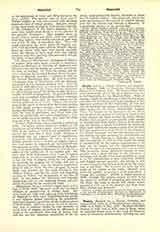

Braille, Louis, a French educator and inventor, b. January 4, 1809, at Coupvray, Seine-et-Marne, France; d. January 6, 1852. He became blind when three years of age, and at the age of thirteen was sent to the Institution for the Blind at Paris. There he showed a talent for intellectual studies and for music; and when his instruction had been completed he was appointed professor in that institution. It was then that he invented his system of writing in raised or relief points for the blind. Before him, Valentin Hairy, the founder of the Institution for the Blind, had invented the method of printing in raised letters which allowed the blind to read by touch; Charles Barbier had invented a sonographic point system as distinguished from Haiiy’s line or letter system, and had devised a simple instrument by which the blind could emboss the words or print them in relief. But this system of writing, based on the sounds of the French language, was too conventional and did not furnish the signs necessary for punctuation and ciphers. Braille, keeping to Barbier’s point system and the principle of relief writing, found the means of representing, by the various combinations of six dots, not the sounds, but the alphabetical letters and all the signs of punctuation, and even of music. This invention, being alphabetic instead of sonographic, was a great advance in the education of the blind, and though it has been modified, at times, as to the combinations of dots (American, English, and English revised systems), the system is still, in most countries, the basis of methods for the education of the blind. The inventor set forth the principles of his system in his work: “Procede pour écrire les paroles, la musique, et la plein-chant, a l’usage des aveugles”, printed in raised letters in 1829. Though this system cannot be said to be the definitive method of education and writing for the blind, the name of Braille will always remain associated with one of the greatest and most beneficent devices ever invented.
G. M. SAUVAGE

